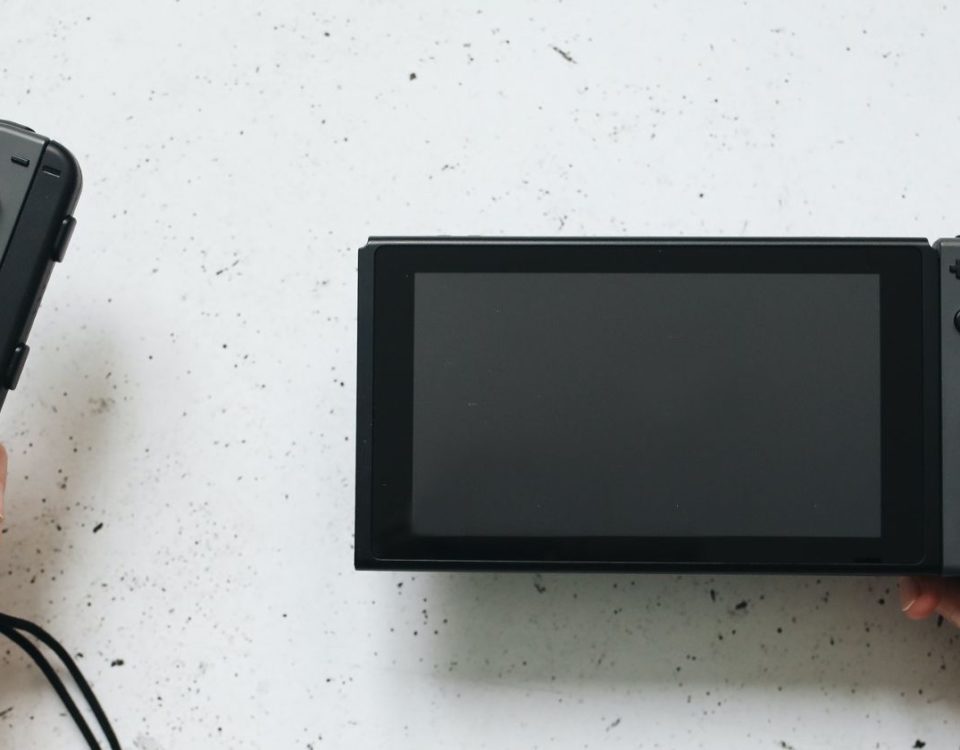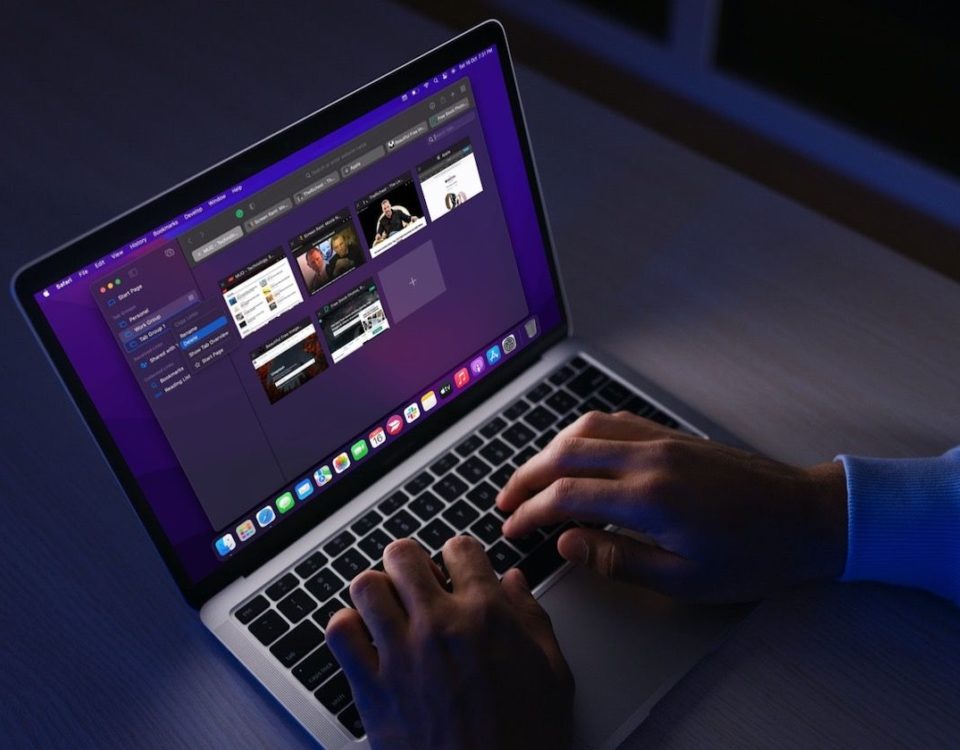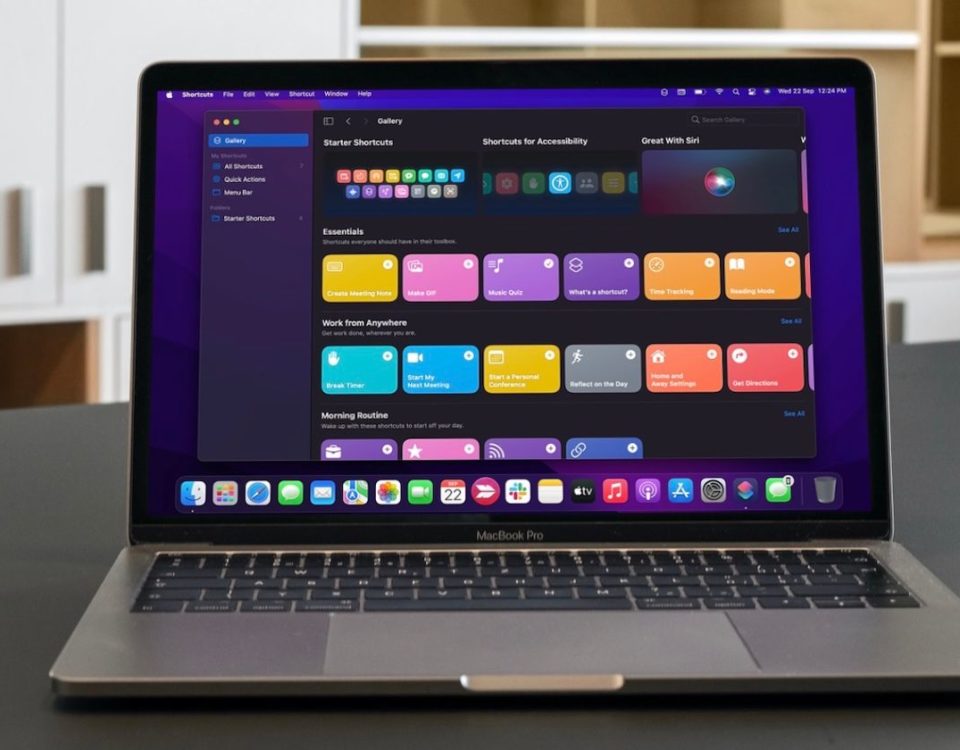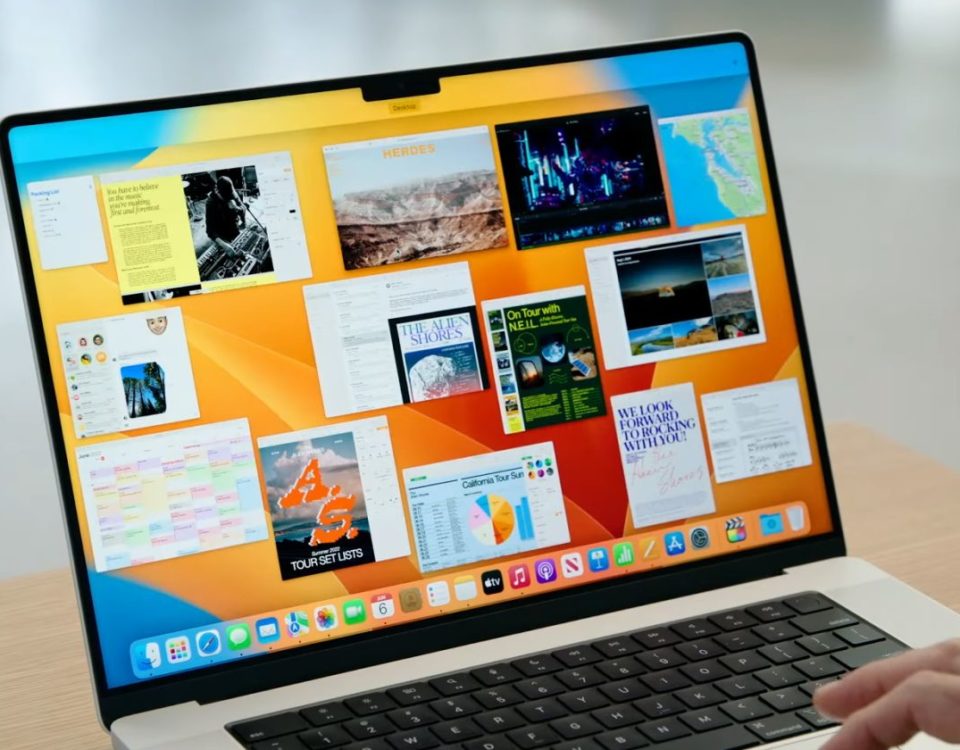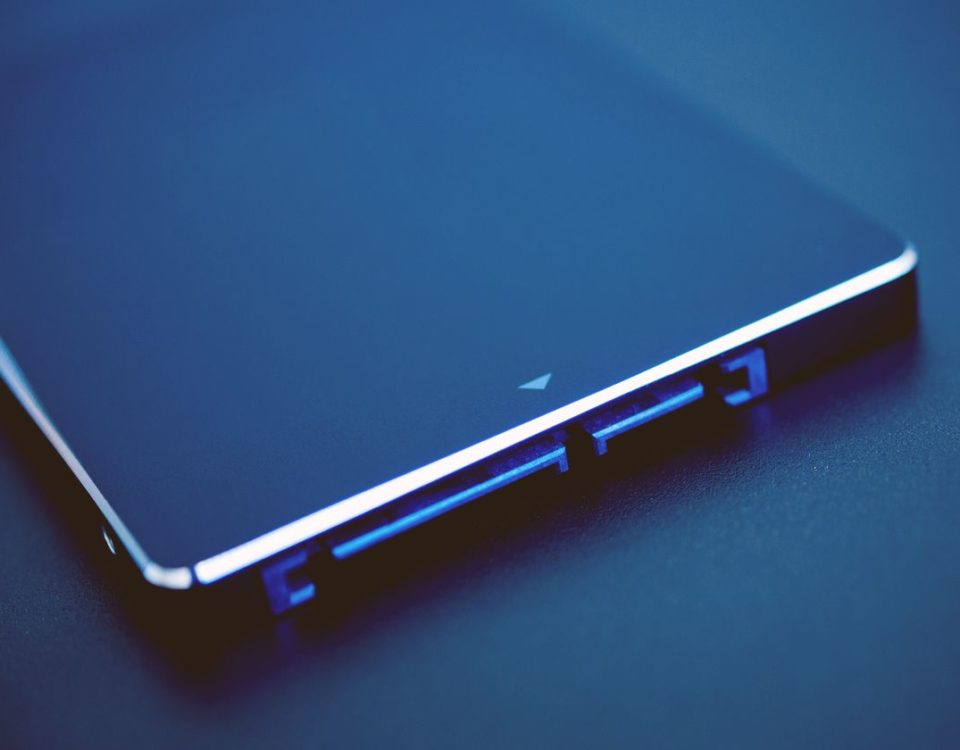 Source: macstore.ar
Source: macstore.ar

Best UPS battery backups for your Mac 2022
20 abril, 2022
How to download macOS Monterey 12.3 public beta to your Mac
20 abril, 2022CPU vs. RAM vs. SSD: Which Mac upgrades should you get?

You can buy a ready-to-ship Mac at any Apple Store, reseller, or online vendor, but if you want something custom, you have to go to Apple’s website and build it to order (BTO). That way, if any of the standard configurations aren’t enough for you, you can bump up the CPU, add more memory, and even go with faster storage. Not every Mac has every option, of course, but for those that do, it’s worth asking — which upgrades are worth the price?
About Apple Silicon
In June 2020, Apple announced it would begin transitioning from Intel-based chips to its own single system on a chip (SoC) architecture. The first of these Apple silicon devices arrived in 2020, with more added in 2021. More Apple silicon-based Macs should be coming before the end of this year. When this happens, the days of Intel-based Macs on the market might be over.
We’ve divided the available options by Intel/Apple silicon below.
Apple silicon Mac upgrades
 Source: Daniel Bader / Android Central
Source: Daniel Bader / Android Central
With the shift toward Apple silicon, there are different choices one can make on the consumer side. You can no longer, for example, select the computer’s central processing unit or CPU. Instead, you can choose the Apple silicon version (when possible), then select the RAM and storage.
To date, only the 16-inch MacBook Pro (2021) offers a choice of Apple silicon (M1 Pro or M1 Max). Other Apple silicon models come with one choice option, the M1, or, in the case of the 14-inch MacBook Pro (2021), the M1 Pro.
Apple silicon: choice of SoC
There’s one choice of SoC on the models below — the Apple M1.
- 24-inch iMac (2021): The SoC comes with an 8-core CPU with four performance cores and four efficiency cores, 7- or 8-core GPU, and 16-core Neural Engine. You’ll pay an extra $200 for the 8-core GPU version.
- MacBook Air (M1, 2020): Ditto here: 8-core CPU with four performance cores and four efficiency cores, 7- or 8-core GPU, and 16-core Neural Engine. There’s a $250 upcharge for the 8-core GPU version.
- 13-inch MacBook Pro (M1, 2020): One option: Apple M1 chip with 8-core CPU, 8-core GPU, and 16-core Neural Engine.
- Mac mini (2020): Also one option: Apple M1 chip with 8-core CPU, 8-core GPU, and 16-core Neural Engine.
Things get more interesting on the 2021 MacBook Pro models, which gives you a few more choices:
- 14-inch MacBook Pro (2021): The M1 Pro comes with an 8-Core CPU, 14-Core GPU, 16-core Neural Engine; OR 10-core CPU, 16-core GPU, and 16-core Neural Engine. You’ll pay $500 extra for the 10-core version.
- 16-inch MacBook Pro (2021): On models with an M1 Pro, the choices are 10-Core CPU, 16-Core GPU, and 16-core Neural Engine; OR 10-Core CPU, 16-Core GPU, and 16-core Neural Engine. On models with an M1 Max, you get a 10-Core CPU, 32-Core GPU, and 16-core Neural Engine. The best M1 Pro version comes for $200 extra; the jump from the entry-level M1 Pro version to the M1 Max option is $1,000.
More CPU and GPU means faster and more efficient systems. And yet, most users won’t need (or want to pay for) the M1 Max. The M1, M1 Pro, and M1 Max aren’t just different with CPU/GPU. Each offers various options for RAM and storage as well.
Apple silicon: choice of RAM
The more memory your Mac has, the bigger the images and videos you can work with, the more apps you can keep open, and generally, the better performance you’ll get. Modern Macs are more memory efficient than ever but if you want to work with many files and a lot of big files at that, RAM can still make your experience smoother.
The Apple M1 SoC comes standard with 8GB of unified memory on the current models, although you can increase this to 16GB. The M1 Pro and M1 Max offer more options.
- 24-inch iMac (2021): The newest M1-based Mac on the market offers 8GB of unified memory or, for an additional $200, 16GB. If you plan on running a lot of processor-heavy apps at the same time, you’re going to want to spend that extra money. I recommend investing here. The more RAM you have, the faster your apps run when your machine gets overworked.
- MacBook Air (M1, 2020): Apple’s ultra-light laptops come with 8 GB of RAM, but you can upgrade to up to 16GB for $200 more.
- 13-inch MacBook Pro (M1, 2020): The smaller of the two Mac laptop powerhouses starts with 8GB, and you can upgrade to 16GB for $200.
- Mac mini (2020): Yes, you’re right. The Mac mini also offers 8GB or 16GB of unified RAM.
- 14-inch MacBook Pro (2021): The entry-level model starts at 16GB of unified RAM. You can increase to 32GB for another $400 or 64GB for an extra $800. Unfortunately, the 64GB option isn’t available on the least expensive model.
- 16-inch MacBook Pro (2021): For the M1 Pro models, you’ll find 16GB, 32GB, or 64GB of unified RAM. The bumps in price are similar to those on the smaller MacBook Pro. The M1 Max model starts with 32GB of RAM; you can increase this to 64GB for another $400.
Apple silicon: choice of storage
Though cloud-based services have freed up computing storage, computer capacity is the one place where an upgrade comes recommended. So whatever you can afford when you purchase your new Mac, you should buy. However, don’t be downhearted if you can’t afford storage upgrades. Cloud storage and external hard drives are cheaper than ever.
- 24-inch iMac (2021): The newest iMac comes with either 256GB or 512GB of built-in SSD storage and can be upgraded to up to 2TB of SSD storage. If you can afford it, we recommend going for 1TB. You’ll probably never need that much, but having it will make you feel better. If 1TB is too expensive, you should, at least, go for 512GB.
- MacBook Air (M1, 2020): You’ll find the same options as those above on the MacBook Air.
- 13-inch MacBook Pro (M1, 2020): Ditto on this one.
- Mac mini (2020): One last time: you get 256GB or 512GB at a starting point and can upgrade to 2TB.
- 14-inch MacBook Pro (2021): Storage begins at 512GB, but you can raise this as far as 8TB.
- 16-inch MacBook Pro (2021): Again, storage begins at 512GB, but you can purchase up to 8TB.
Intel Mac upgrades
 Source: macstore.ar
Source: macstore.ar
The number of Intel-based Macs now stands at only three. You can purchase an Intel-based Mac mini, the 27-inch iMac, or the Mac Pro.
Intel: choice of CPU
The CPU is the engine that makes your Mac go. Generally speaking, faster cores let you do single things faster. More cores let you do more things at once. So, getting a speedier core is like upgrading from a regular car to a race car. Likewise, going from dual to quad-core is like getting a second car.
Since you can’t change a CPU after buying your Mac, you want to make sure you buy the right one — not just for your needs now, but for your needs next year and the year after that.
- iMac 5K 27-inch: You can get a 3.1GHz 6-core 10th-gen Intel Core i5 standard and up to 3.8GHz 8-core 10th-gen Intel Core processor. For $400 more, you can bump it up to a 3.6GHz 10-core 10th-generation Intel Core i9 processor.
- Mac mini: The Intel-based Mac mini comes standard with a 3.0GHz Intel Core i5 6-Core processor. You can also select a 3.2GHz 6‑core 8th‑generation Intel Core i7. Depending on your needs, the i7 may be unnecessary. Stick with the 6-core i5 model if you don’t plan on putting too much strain on your DIY Mac. Remember, you can stack these babies, so spending the money on multiple Mac minis may be wiser.
- Mac Pro: The granddaddy Mac comes standard with a 3.5GHz 8‑core Intel Xeon W processor, but if you’re buying a Mac Pro, you probably need something a little faster. For $7,000, you can upgrade to a 2.5GHz 28‑core Intel Xeon W processor, but that is overkill for a lot of your needs. Most pros recommend upgrading to either a 3.3GHz 12‑core Intel Xeon W processor for $1,000 more or a 3.2GHz 16‑core Intel Xeon W processor for $2,000. This level suits CPU rendering, compiling large projects, running multiple virtual machines, and similar tasks.
Intel: choice of RAM
Here are the latest RAM specs on the Intel-based Macs only:
- **iMac 5K 27-inch***: 8 GB is the starting point for the 27-inch iMac, but you can upgrade to 128GB of RAM.
- Mac mini: The Intel-based models start with 8GB, which you can upgrade to 64GB.
- Mac Pro: The Mac Pro can support up to 768GB of RAM, 1.5TB if you get the 24 or 28-core model. It comes with 12 physical DIMM slots, which means that you can add memory at any time aftermarket. Just keep in mind that, even though the Mac Pro supports both R-DIMM and LR-DIMM, you can’t use both in the same system. We recommend purchasing RAM on your own from a third-party vendor so you can choose which type is right for your system.
Intel: choice of storage
With storage, Apple offers:
- iMac 5K 27-inch: The 3.1GHz 6-core iMac only has one storage option: 256GB. If you’re on a tight budget, you don’t have a lot of choices. You could, however, invest in external hard drives to store some of your files and documents, and cloud storage is more prevalent than ever. The 3.3GHz 6-core iMac can be upgraded to 2TB of SSD storage, and the 3.8GHz 8-core iMac can be upgraded to 8TB of storage. To future-proof your Mac, we recommend adding as much storage as you can afford, though most won’t need even 2TB of storage. We recommend at least upgrading to 1TB if you can afford it.
- Mac mini: The Intel model starts at 512GB and can also get upgraded to 2TB, if necessary. We recommend at least 1TB.
- Mac Pro: The Mac Pro starts with just 256GB of SSD storage but is fully customizable after purchasing it. It might be wise to upgrade to 1TB right out of the gate, depending on how soon you’ll be able to add third-party capacity upgrades, but don’t spend too much money here since you’ll be able to find lower-priced SSDs on your own.
Who should upgrade their Mac’s processor?
Of all the upgrades, CPU configurations offer the most questionable benefit. A bump in overall processor speed is nice, but is it worth paying a couple of hundred bucks more to get another 10 or 30 percent improvement? That’s up to you to decide. On Apple silicon Macs, the choice has primarily been made for you.
Who should upgrade their Mac’s memory?
8GB of RAM is standard on most Mac laptops and desktops, which is plenty for most people. If you run a lot of robust programs simultaneously, however, you should bump that up where possible. 32GB of RAM is the sweet spot for you.
Upgrading after the fact is only possible on very few Macs, so keep that in mind when deciding whether to upgrade. You may be stuck with what you have for years to come.
Who should upgrade the SSD?
Undercutting yourself with storage space right off the bat will cause you problems, but take a long hard look at your current storage footprint and see what you need. If you’re like many people, you’ll discover that you don’t actually need everything you have and that you’ll be able to offload some of it to a server, external device, or archive system.
SSD is expensive, but the performance is spectacular. So pay for as much as you can afford, but see what you can live without and try to save yourself some money.
Lots of choices
Choosing the internals for your new Mac is perhaps the most important step after deciding how much you can afford. So, take your time, live with your selection, and enjoy your new machine!
Update February 2022: Includes information on latest Apple silicon computers.

